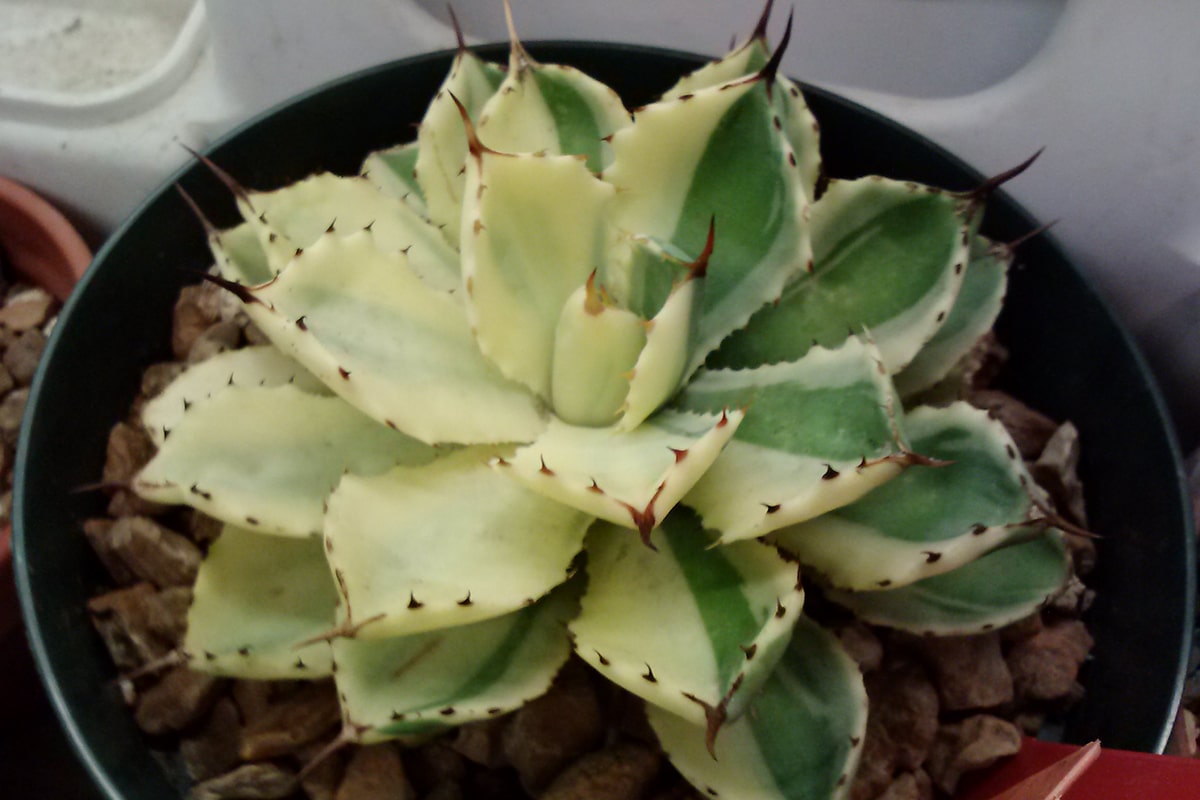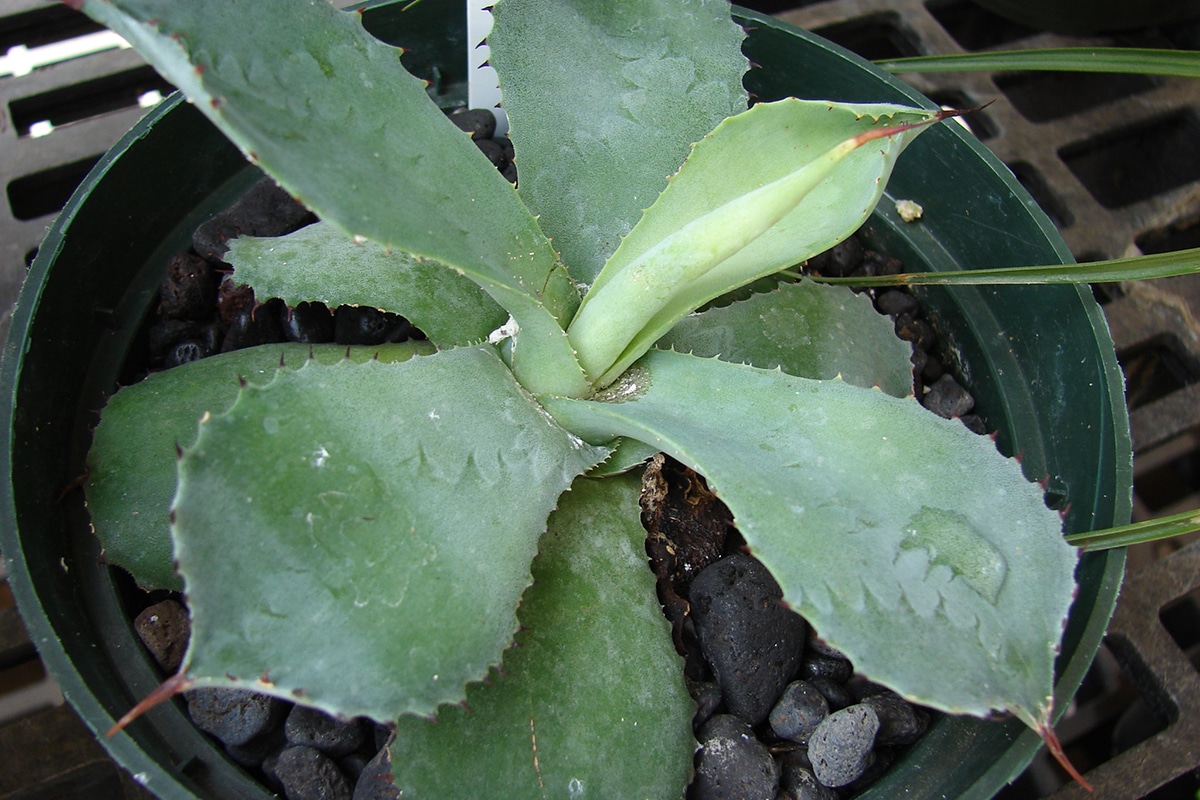
Among the many succulents found on this planet is the Agave potatorum. It is a plant native to Mexico that It has been cultivated for centuries for its medicinal and culinary properties. This species of agave is commonly known as the "Agave of the tequileros" due to its use in the production of tequila. However, this succulent is also used in the preparation of various products, such as pulque, a traditional alcoholic drink from Mexico, and nectar, a natural syrup used in the food industry.
In this article we are going to explain what is the Agave potatorum and what is it used for. In addition, if you are interested in growing this vegetable, we will talk about how to reproduce it and we will discuss the care it requires. I hope you find this information useful and interesting!
What is Agave potatorum?

La Agave potatorum, also known as Maguey del monte, Maguey de mezcal or Maguey mariposa, it's a kind of succulent plant belonging to the family of agavaceae. It is native to Mexico and is cultivated mainly for its fleshy and succulent leaves, which are used for the production of alcoholic beverages such as mezcal and tequila. It is also a popular ornamental plant due to its attractive appearance and large, thick leaves.
Due to its beauty and compact size, it is a popular addition to cactus and succulent collections. While it is true that the main use of the Agave potatorum It is used as an ornamental plant in gardens and patios, it is also used in the production of mezcal. This is a traditional Mexican alcoholic drink that is produced from the fermentation and distillation of the pulque extracted from the plant. In fact, the word "potatorum" derives from "potator", which translates as "drinker", thus referring to its use as a mezcalero agave.
In addition to its culinary versatility, la Agave potatorum It is also known for its medicinal properties. The plant contains anti-inflammatory and pain-relieving compounds that have been used to treat a variety of conditions, from headaches to cardiovascular disease. Agave potatorum has also been shown to have a positive effect on gastrointestinal health and may be useful in the treatment of diabetes. In short, Agave potatorum is a versatile and valuable plant that has been used for generations in Latin America for culinary and medicinal purposes.
How to reproduce agave potatorum?
Now that we know what is Agave potatorum, let's see how we can reproduce it in the event that we want to cultivate this species. There are three different ways to propagate it:
- By seeds: As we have already mentioned before, the plant flowers only once in its life and produces seeds after flowering. The seeds can be sown in a well-drained substrate and kept moist until they germinate. It should be said that this method is more difficult and requires more time than the others.
- By cuttings: The leaves of the Agave potatorum they can be cut and used as cuttings for propagation. The cut leaves should be left to cure for a few days and then planted in a well-drained substrate.
- By children: Some varieties of Agave potatorum They produce suckers at their base. These suckers can be separated from the mother plant and planted to form new plants.
It is important to take into account that the Maguey del monte is a plant slow growing and that it can take several years to reach its adult size.
As for its appearance, the Maguey del monte is a medium-sized succulent plant that can grow up to 1,2 meters in height and 1,5 meters in width. It has thick, lanceolate leaves with sharp edges and a smooth texture to the touch. The surface of the leaves is dark green with brown or gray spots, and may have a white or yellow central streak. The central stem is short and extends upward from the center of the leaf rosette. The Agave potatorum blooms only once in its life and produces a large, thick spike-shaped inflorescence. The flowers are yellow or white in color and are located at the end of the inflorescence.
Care of the Maguey de monte

We already know what is Agave potatorum and also how to reproduce it, but what care does this succulent require? If we want our Maguey del monte to prosper correctly, we must follow the following advice:
- Light: It needs strong, direct light to thrive.
- Irrigation: Watering should be moderate, allowing the soil to dry out between waterings. It does not tolerate excess water.
- Temperature: It is tolerant of a wide range of temperatures, from ten degrees Celsius to forty degrees Celsius.
- Ground: It prefers well-drained soils with a slightly acidic to neutral pH.
- Fertilization: Frequent fertilizing is not necessary, but a balanced fertilizer can be applied in small amounts during active growth.
- Pruning: Although it is true that the Maguey del monte does not require pruning, it is highly recommended to trim it to maintain its shape or to remove dry or damaged leaves.
In short, the A.Gave Potatorum It is a hardy, easy-care plant that requires strong light, moderate watering, and well-draining soil to thrive.
Plagues and diseases
It should be noted that the Agave potatorum It can be affected by various pests and diseases, including the following:
- Mealybugs: They are small insects that feed on the sap of the plant, causing damage to the leaves and reducing nectar production. See file.
- Nematodes: They are microscopic worms that can damage the roots and reduce the uptake of nutrients by the plant. See file.
- Fungi: Some fungal diseases can affect the health of the root and base of the plant. See file.
- White fly: It is a pest that can cause leaf damage and reduce nectar production. See file.
It is important to implement preventive and control measures to protect the health of the Agave potatorum and prevent the appearance of these pests and diseases. This includes regular monitoring of the plant, applying pesticides and fungicides when necessary, and maintaining a good irrigation and drainage system.
With all this information we are ready to grow and care for our own Maguey del monte!